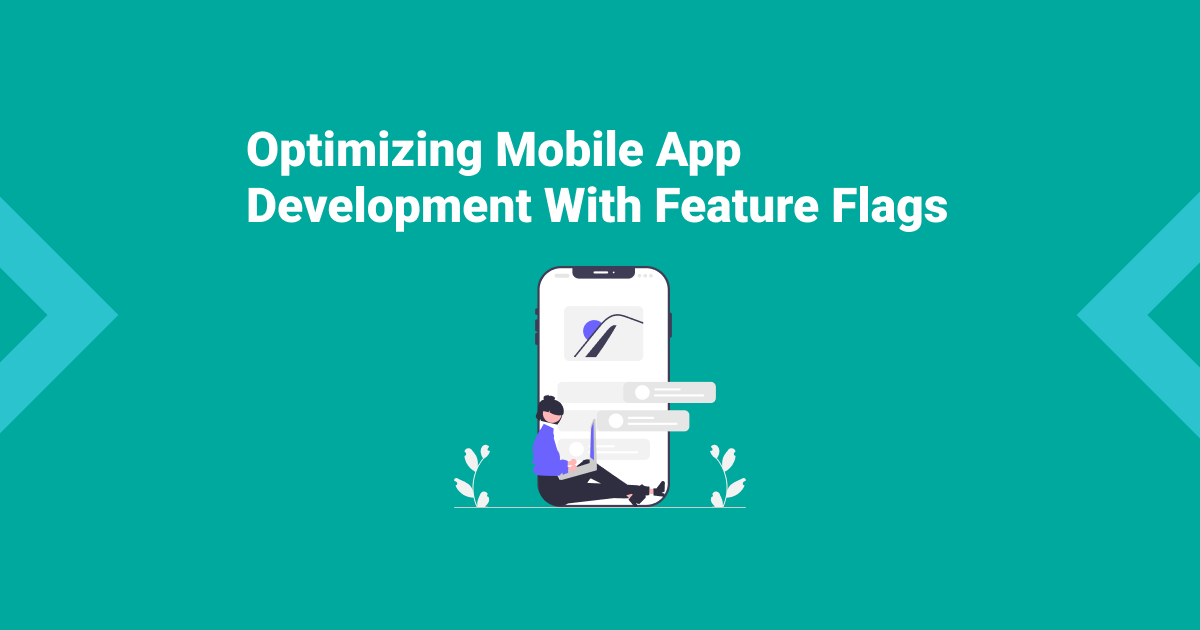Optimizing Mobile App Development with Feature Flags
From social media to banking, health monitoring to entertainment, mobile apps have intricately woven themselves into the fabric of our day-to-day activities. This widespread adoption has led to a surge in demand for more sophisticated, user-friendly, and dynamic applications.
In response to this demand, developers and companies are constantly seeking innovative methodologies and tools to streamline the app development process, enhance user experience, and ensure the delivery of high-quality products. This is where feature flags come into play.

Mobile app development
Mobile app development is the complex process of designing, building, and launching software applications that operate efficiently on mobile devices, such as smartphones and tablets. This process combines art and science, involving a deep understanding of user needs, technological capabilities, and creative design.
Mobile apps have come to serve as the primary interface between businesses and consumers. They offer unparalleled convenience, accessibility, and personalization, making them a vital component for businesses in enhancing customer engagement and driving growth. For individuals, mobile apps have transformed how we communicate, work, and entertain ourselves.
The process of creating mobile apps involves the following stages:
- Planning: Defining objectives, scope, and roadmap; conducting market research and identifying the target audience, app's goals, and features or functionality; and technical & back-end assessment.
- Design: Focuses on user experience, layout, interface design, prototyping, and intuitive user journeys.
- Development: Coding the app, integrating various functionalities, databases, APIs, and features.
- Testing & QA: Conduct rigorous testing for quality assurance, bug fixes, and compatibility checks.
- Deployment: Launch the app in app stores and execute marketing strategies.
- Maintenance and Updates: Continuously update, iterate, and maintain the app for relevance, functionality, and security.
Challenges in mobile app development
Mobile app development is laden with challenges, ranging from streamlining the app development process to keeping up with rapidly changing technology and market trends. Developers have to deal with many different operating systems, hardware specifications, and user preferences. Additionally, the increasing emphasis on creating apps that are not only functional but also have intuitive user experience and resonate with users on a personal level, adds another layer of complexity.
To address these challenges, the industry constantly seeks innovative solutions like agile development methodologies, cross-platform development tools, and, most notably, the integration of feature flags. These approaches aim to make the development process more efficient, flexible, and aligned with user expectations.
The role of feature flags in mobile app development
At its core, a feature flag is a tool that enables developers to turn certain functionalities of an app on or off, without the need to deploy new code. This method offers a level of control and flexibility in the development process, fundamentally changing how features are rolled out and managed.
Feature flags act as switches that can activate or deactivate parts of the app's functionality, allowing developers to test new features, fix bugs, or respond to user feedback swiftly and efficiently.
Benefits of using feature flags for mobile app development

The integration of feature flags into mobile app development brings a multitude of advantages that can significantly enhance the development process, improve user experience, and contribute to the overall success of an app.
-
Enhanced control and flexibility in development - Feature flags allow developers to decouple features from code deployment. This flexibility allows for a more dynamic development process where adjustments can be made in real time, ensuring that the app remains aligned with user needs and market trends.
-
Tailoring user experience to specific groups - One of the standout advantages of feature flags is the ability to tailor the app's features to specific user segments. For example, a feature can be rolled out to a particular demographic to assess its relevance and effectiveness before a broader release or enabled for only specific regions based on relevance.
-
Facilitating efficient A/B testing - Feature flags are an invaluable tool for conducting A/B testing, allowing developers to test different variations of a feature or implementation with various user groups. This method enables developers to make data-driven decisions that can enhance the app's appeal and usability.
-
Mitigating risks associated with new features - Introducing new features can introduce risks like technical glitches, negative user feedback, or unintended impacts on app performance. Feature flags help mitigate these risks by isolating the impact of new features. If a feature does not perform as expected or causes issues, it can be quickly disabled, minimizing any adverse effects on the overall app experience.
-
Continuous delivery and integration - Feature flags align well with continuous delivery and integration practices, allowing for ongoing development, testing, and release of features. This continuous iterative cycle ensures that the app is constantly improving and adapting, keeping pace with technological advancements, user expectations, and market trends.
-
Encouraging innovation and experimentation - Feature flags encourage a culture of innovation and experimentation. Developers can try new ideas and approaches without the fear of disrupting the app's core functionality. This freedom fosters creativity and innovation, leading to more innovative and cutting-edge applications.
Integrating feature flags into your mobile app development

Integrating feature flags into the mobile app development process is a strategic move that can yield significant advantages. However, this integration requires careful execution to ensure its effectiveness.
-
Strategic planning: Determine which app features could benefit from being toggled and under what conditions. This step involves aligning the use of feature flags with the overall goals and objectives of the app.
-
Selecting the right platform: Choose a feature flag management system that aligns with your app's needs. This could be a third-party feature flag management service like ConfigCat. The platform should offer robust functionality, ease of use, and integration capabilities with your existing development tools.
-
Implementation in the codebase: Incorporate feature flags in the app's codebase. This involves writing conditional statements that control the visibility and behavior of features based on the status of the feature flags.
-
Testing the feature flags: Test the feature flags in various scenarios to ensure they work as expected. This includes testing their impact on the app’s performance, usability, and overall functionality.
-
Rolling out features: Start with a small group of users to gauge the impact of the new features. Monitor metrics and gather user feedback to understand how the feature is performing and being received.
-
Analyzing and iterating: Use the data collected from the initial rollout to make informed decisions. If the feature is successful, consider a broader rollout. If not, use the insights to refine the feature or roll it back.
Conclusion
Mobile app development is a dynamic and multifaceted field that demands a deep understanding of technology, user experience, and market trends. Its significance in today's tech-driven world is undeniable, and it continues to evolve, presenting new opportunities and challenges. As we delved deeper into the role of feature flags in that process, we saw how they offered a strategic solution to many of the challenges faced in mobile app development.
If you're considering experimenting with feature flags for your next mobile development project, ConfigCat offers a free-tier account that is perfect for most cases. To get started, sign up here.
For more feature flagging goodies, stay connected to ConfigCat on X, Facebook, LinkedIn, and GitHub.
